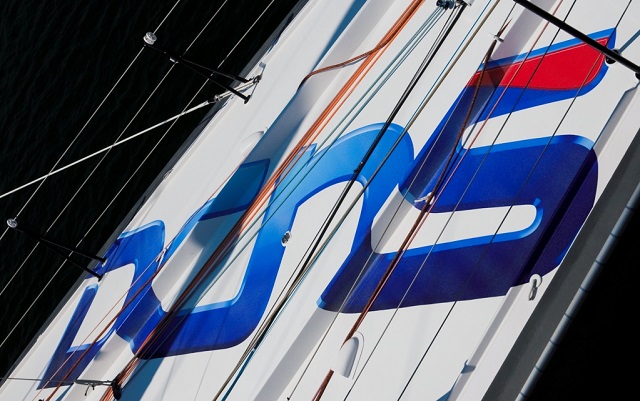Where Australia selects France, it selects enduring geopolitical alignment and surety of supply, a program of technical transfer to deliver sovereignty, a regionally superior capability and interoperability with our allies.
I can make those statements with respect to France because France is a complete submarine power and has national polices to remain so. A complete submarine power is one that can safely design, build, operate and sustain any class of submarine on an enduring basis.
Objective evidence of being a complete submarine power is the ability to re-apply technology from multiple designs, both nuclear and conventional, to optimize for any one design. In a strategic framework this is critical. Whatever the future holds, cooperation with a complete power provides Australia with the greatest latitude in developing a solution.
Planned in detail to beyond the year 2080, France’s mature galaxy of submarine capabilities stems from France’s own commitment to, and maintenance of, a strategic nuclear deterrent. Stemming from this national undertaking France autonomously designs, builds and sustains large ocean going nuclear powered submarines, conventional submarines and of course has proven and established methods for technology transfer.
Consider what’s behind this statement—enduring and leading edge capabilities for Australia in stealth, sonar and other sensor technology derived from nuclear missile and nuclear attack submarines, the return on experience from long-range patrols, nuclear safety standards, technology development pathways, a complete array of research and development and test facilities… I could go on.
The relevance of those capabilities are brought to bear when one considers the Australian Future Submarine requirement, which self-evidently calls for a new submarine and not one that’s in existence today. Although it may seem obvious, it’s worth pointing out that when DCNS received Australia’s requirement we immediately recognised that the French Barracuda was the most suitable reference design and not our existing conventional design.
As a complete submarine power, we understand conventional propulsion, which is why we also understand that propulsion is but one part of the submarine puzzle. In designing to the Australian requirement, it should come as no surprise then that the conventionally powered Shortfin Barracuda Block 1A is only 5% lighter than its nuclear cousin.
The Future Submarine Program isn’t a competition for an existing submarine but a global design development and technology transfer program to deliver an integrated capability and not a product. That should be obvious, and where statements are made that existing designs will be lengthened and widened to the requirement, it only proves my point.
For submarine matters, France offers a strategic partnership that directly interfaces with and complements that offered by the US in submarine weapons and electronic systems. Together with the United Kingdom, the strategic future for Australia in terms of sovereignty, enduring regional superiority and interoperability is in joining this club of complete submarine powers.
There’s no better example of what I’m talking about than the offer from France to transfer to Australia sovereign control and use of pump-jet propulsion technology for the Shortfin Barracuda—technology resident only in France, the UK and the USA. Technology born from the French SSBN program a generation ago. The stealth and hydrodynamic performances of pump jet propulsion are of course classified and in Australia known only to DCNS and the Australian Government.
For Australia, our industrial plan is built for the unique circumstances facing Australia’s submarine enterprise as well as from the return on experience from decades of international technology transfer.
DCNS will transfer know-how from France to Australia, purposefully apply this knowledge to create specific benefits in our programs and develop an innovation environment around our scientific, education and industrial community to provide an enduring and continuously improving service for our customer.
As part of our Australian Industry Plan, DCNS has already consulted hundreds of Australian companies and has identified more than 50 projects to develop new capabilities within our sovereign bounds.
From the early days of the future submarine program DCNS proposes to develop centres of excellence organised around four competitiveness clusters.
The first will be based on advanced manufacturing, with technological issues to address such things as hull materials and welding, composite materials, corrosion and hydrodynamics.
The second will focus on engineering methods and tools in an effort to ensure DCNS stays at the edge of best practice. It would deal with such issues as program management, configuration and data management, 3D and virtual reality, simulation, test and training.
The third will focus on emerging or evolving technologies, such as optoelectronics, stealth and signature management, energy storage and optimization, permanent magnet electrical propulsion, lithium ion batteries and cyber security.
The last cluster will focus on emerging technologies in support and sustainment, which today include such things as predictive testing, vibration analysis and availability management.
From a nation of only 66 million people, and with the same western demographic and cultural challenges as Australia, the French submarine enterprise:
- Maintains a continuous strategic nuclear deterrent at sea,
- Designs several classes of the most advanced types of submarines,
- Has had a submarine at sea every single day since 1972,
- Publicly contracts for 240 days at sea each year for their SSNs,
- Has multiple crewing concepts in place for all its submarines,
- Routinely patrols as far afield as the south western Indian ocean,
- Has a complete end-to-end scientific, educational and research and development program planned to beyond the year 2080.
In other words, France has a mature submarine enterprise and there is no reason why Australia cannot have one, too.
Whatever the outcome of the CEP, my hope is that Australia can seize this once in a generation opportunity to form a submarine enterprise that’s fit for its needs and become sovereign, enduring, autonomous, regionally superior and interoperable.


